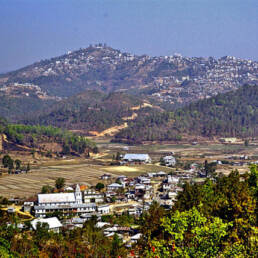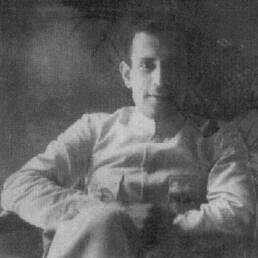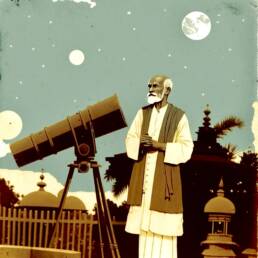In 1934 an 8.0 magnitude earthquake shattered parts of Nepal and India. Among the worst affected was Northern Bihar. From the horrors of the region, however, a British Civil Servant spotted something magical. Athread on how Mithila art came to light.
“I must confess that for at least an hour, I forgot the earthquake and its horrors. I was entranced by what I saw…in these murals we somehow electrically met. What they took for granted, I considered superb … The art was there and made us one … I saw the beauty in the mud.”
This article published on an uncertain date tells the story of a man who accidentally discovered an art form in the midst of a horrific human tragedy. The author of the article was William G. Archer or Bill Archer as he was often called.
Archer, a graduate of History from Cambridge University passed the India Civil Service exam in the early 1930s and was posted in rural Bihar. Archer was an avid follower of contemporary art debates and kept himself updated about all that was going on in the art world.
In 1933 Archer was posted as a Magistrate in Madhubani, a subdivision of the Darbhanga district in Northern Bihar. Well-versed in English, Archer spent most of his time handling petty squabbles among villagers and occasionally looking over major law and order issues.
In January 1934 in a massive earthquake in parts of Nepal and Northern Bihar, parts of Madhubani were heavily damaged. Archer then recounts in his diary an interesting tale.
“I had ridden out one evening to a village close to Madhubani itself and chanced upon a small white temple. The mahant (priest) invited me to see the image. It was a black stone dressed in doll-like clothes”
As Archer moved further on, he saw more beautifully painted murals on the side of ruined houses, and then as he stumbled upon a marriage chamber (kohbar ghar), he was mesmerized.
He saw a canvas depicting a lotus pond surrounded by all kinds of animals and symbols of feminine beauty and fecundity. The kohbar paintings were supposed to enhance a couple’s fertility
These paintings were not only eye-catching in their extensive use of various colors but also distinct in their descriptions. They depicted the male and female lines and various gods and goddesses giving their blessings on an auspicious day.
What baffled Archer however was how the paintings differed in different households– the paintings of a Brahmin household came out to be more natural, while the hand paintings of the Kayastha household were much bolder in nature.
On these differences, Archer commented, “If Maithil Brahmin murals resembled Miro or Klee, here was Picasso naked and unashamed.”. What Archer discovered was just a glimpse of a thriving age-old art form, but it left him captivated.
In his further research, Archer diligently photographed around 200 paintings during his travels through Madhubani. Though he might not have been the first one to come across the art form, he certainly kept better records than anybody else at the time.
In 1949 Archer released an article detailing Madhubani art in the art magazine Marg, sending the art world into a tizzy. But it would still take many more years for Madhubani art to have a commercial market of its own.
In 1965 Pupul Jayakar, chair of the All-India Handicrafts Board contacted Archer for a more detailed research. Her first visit to Mithila in the 1950s didn’t prove to be that useful. Archer urged her to contact the Brahmin and Kayastha families in the villages of Jitwarpur and Ranti.
Pupul enlisted the help of artist Bhaskar Kulkarni in 1966 to track down the artists. Kulkarni found some Kasytha households in the village of Ranti where he told the women to recreate the paintings on paper.
Pupul and Kulkarni’s endeavor became a success, and artists like Ganga Devi and Mahasundari Devi (Kayastha painters), and Sita Devi and Jagadamba Devi(Brahmin Painters) tasted immediate success and became recognized for their work.
Sita Devi and Ganga Devi were later even invited to Europe, Japan, USSR, and the USA to showcase their work. As more and more people came to know about this, they flocked to Madhubani for creative and commercial purposes.
A telling contribution to Madhubani’s commercial success was made by American Raymond Owens, who started visiting the region in the late 1970s buying art from local artists at a premium and then selling it in the United States, boosting incomes and creating a commercial enterprise.
Sources: William Archer: Aesthete, Ethnographer, and Administrator. Marine Carrin, Journal of Adivasi and Indigenous Studies (JAIS) Vol. X, No. 2, August 2020: 6–29; Mithila painting: 1949-2014, The Marg Foundation, https://www.thefreelibrary.com/Mithila+painting%3A+1949-2014.-a0389937203; The Walls Have Eyes: The discovery and evolution of Mithila art, SRIDEVI NAMBIAR, https://sarmaya.in/spotlight/the-walls-have-eyes-the-discovery-and-evolution-of-mithila-art/




